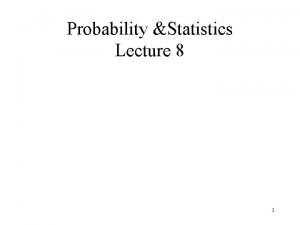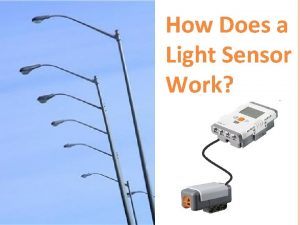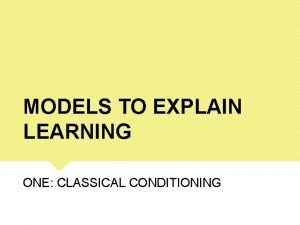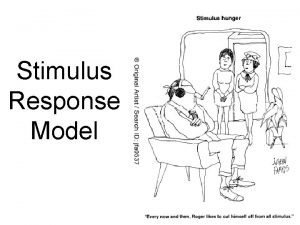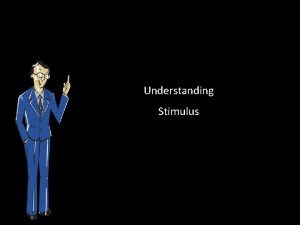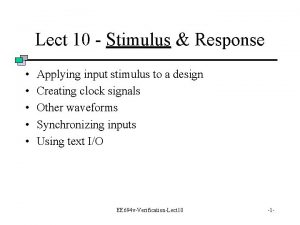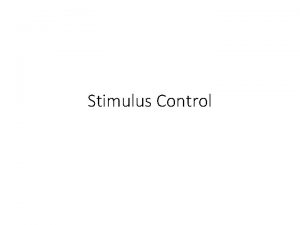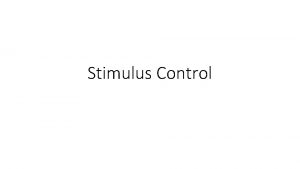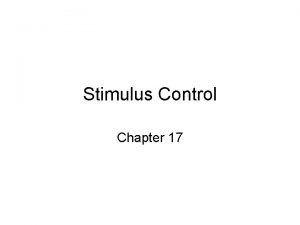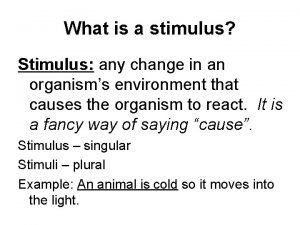Lect 11 Stimulus Response Checking the response of




















- Slides: 20

Lect 11 - Stimulus & Response • • Checking the response of a design Verifying output – using listings and waveforms Signal Sampling Automating output verification Golden vectors and output timing Deadlock and deadlock recovery Predicting the output EE 694 v-Verification-Lect 11 1

Verifying Output • Generating stimulus is only half of the job. Actually, it is about only 30% of the job. You control the value and timing of the stimulus. • Knowing the value and timing of the output given an input, or a sequence of inputs, is key to performing verification • Verifying that the output is as expected – is more time consuming – is more error prone • Specific points in time that are significant differ from design to design EE 694 v-Verification-Lect 11 2

Signal Value Listing • Allows for visual inspection of results • Without listing of expected value is very prone to errors EE 694 v-Verification-Lect 11 3

Signal Waveforms • Also allow visual inspection of results • Without showing expected value of signal, can be very hard to find errors EE 694 v-Verification-Lect 11 4

Listings and Waveforms • Should log significant signals • Should log signals at appropriate times • The signals which are significant, and the times at which they are important, changes as the simulation progresses • Should always list/display the expected value of the significant signals EE 694 v-Verification-Lect 11 5

Sampling Signals • One method of monitoring is to just add the signal – to those captured by the listing file – to those displayed on the waveform • To maximize to speed of simulation, need to minimize the amount of simulation output. Use Text I/O to save certain signal values to a file EE 694 v-Verification-Lect 11 6

When to Sample? • Simplest technique: sample relevant signals at regular intervals • Interval can be – Periodic, i. e. , simply time – Based on a reference signal such as a clock – Based on whenever one signal in a set of signals changes EE 694 v-Verification-Lect 11 7

Inspection of Waveform • Visual inspection, without the expected result, is prone to error. Even with the expected result, visual inspection can allow for errors being missed • How long would it take to notice error? And this is for a D F/F with a 2 -to-1 mux on the data inputs EE 694 v-Verification-Lect 11 8

Automating Output Verification • The first step to automating output verification is to know and include the expected result along with the input stimulus. • A problem with outputs is that you need to know not only the value, but also the time at which the output value will be present. • Interfaces that pose difficulty are – – Asynchronous interfaces Out or order execution Variable output sequences given the same set of inputs Different clock domains EE 694 v-Verification-Lect 11 9

Golden Vectors • A set of reference output results determined to be correct. • May be used in HDL simulations • May be used in/with other tools to check for the validity of the result • Can become invalid and no longer help if the design specification changes EE 694 v-Verification-Lect 11 10

Output Timing • To properly and completely verify the functionality of a design, – must also verify the output stays stable as specified, – the value of the output is as specified, – the timing of the output is as specified • For busses may need to insure bus is at highimpedance (Z) prior to a signal value, the signal value is then applied and held until the bus again returns to high-impedance. EE 694 v-Verification-Lect 11 11

Complex Stimulus/Response • Applying stimulus to simple inputs, such as a clock, is straightforward. The verification engineer determines the value and timing of the signal. • If the signals being interfaced contain handshaking or flow control, the testbench must cooperate with the design under test. • Problems in handshaking can occur in both the design under test and the testbench. EE 694 v-Verification-Lect 11 12

Deadlock • If feedback from the design under test is used to apply the test(s) then deadlock becomes possible. • If the design under test does not provide the feedback as expected, stimulus generation may be halted. • If deadlocked, you are waiting on a condition that will never occur. • If deadlocked, the simulation may still be running and the logging of some signals may still be taking place, but anything useful is not!! EE 694 v-Verification-Lect 11 13

Deadlock Recovery • If deadlock is possible must make sure simulation halts or at least identifies what has occurred. EE 694 v-Verification-Lect 11 14

Complex Response • Complex responses are – Responses that cannot be checked at one point in time – Responses that have long delays from application of the stimulus until the response – Responses that result from out of order execution of the inputs • Definitely not verifiable using visual inspection. • A complex response cannot be verified in the same process that generates the stimulus EE 694 v-Verification-Lect 11 15

Predicting (Knowing) the Output • Unstated assumption of self-checking testbenches is that you know the output to be produced, given the inputs. • Sometimes output prediction is – Easy – RAM, ROM, adders, … – Hard – Video compressor, speech synthesizer, … • Knowing the response is key to verification. EE 694 v-Verification-Lect 11 16

Classes of Designs – Data Formatters • Predicting the output is dependent on the device/system/ sub-system/… being verified. • Data Formatters – class of designs where the input information is not transformed, simply reformatted EE 694 v-Verification-Lect 11 17

Data Formatters (2) EE 694 v-Verification-Lect 11 18

Classes of Designs – Packet Processors • Family of designs that use some of the input information for processing, sometimes transforming it. The remainder is untouched and sent to the output. • Examples – Ethernet hubs, ATM switches, etc. Output monitors assure the packet is correctly processed EE 694 v-Verification-Lect 11 19

Classes of Designs – Complex Transformations • Design processes and transforms the input data completely and thoroughly to produce outputs that may differ in both data, timing, and the number of outputs per input. • Must either hand compute output(s) or use an alternative model (may even be written in another language, such as C or C++) EE 694 v-Verification-Lect 11 20
 Var lect
Var lect Conditioned stimulus psychology definition
Conditioned stimulus psychology definition Latent learning ap psychology definition
Latent learning ap psychology definition What make learning permanent
What make learning permanent How does light sensor work
How does light sensor work Vocabulary journal example
Vocabulary journal example Unconditioned stimulus unconditioned response
Unconditioned stimulus unconditioned response Geotropism stimulus and response
Geotropism stimulus and response Response and stimulus
Response and stimulus Stimulus receptor signal response
Stimulus receptor signal response Stimulus
Stimulus Paraphrase recognition listening
Paraphrase recognition listening Discriminatory stimuli
Discriminatory stimuli Direct selling vs traditional marketing
Direct selling vs traditional marketing Stimulus class vs response class
Stimulus class vs response class Listening answer
Listening answer Response prompt vs stimulus prompt
Response prompt vs stimulus prompt Stimulus receptor signal response
Stimulus receptor signal response Thiếu nhi thế giới liên hoan
Thiếu nhi thế giới liên hoan Phối cảnh
Phối cảnh điện thế nghỉ
điện thế nghỉ
